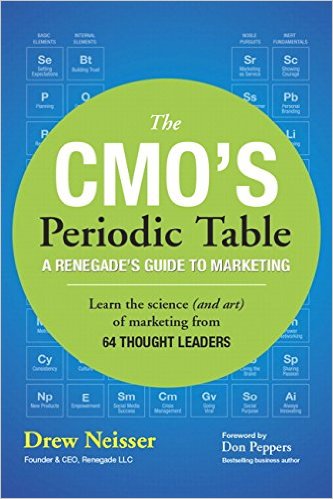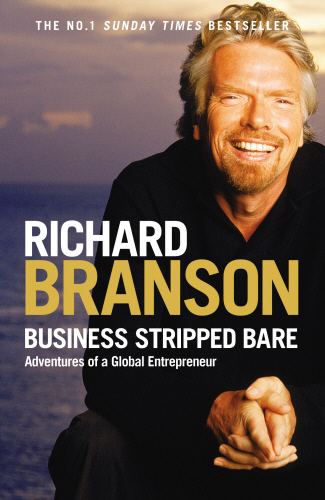
The challenge of a book like this lies in the contradictions. This expert says this and that expert says that. One shouts “Trust only your gut!” while another insists that you’re mad if you don’t value the insight of friends and strangers. Some are charming and some are tight-lipped. Some coast on the payout of their one big idea, while others answer your questions as they shovel coal in the boiler room of their new venture.
And yet it is these very contradictions that provide real value to anyone wishing to learn. For while they may make for a messy book, it is one that reminds you at every page that there is no single right way to do to this. And that there never has been. Jobs was not Edison was not Watson was not Rockefeller. That reminds you to, yes, of course, seek stories of how others did it, but do not ape them in the belief that they have cracked the eternal code. Instead, use their stories to learn new strategies for finding your own paths. A path you will forge that will not be theirs. Because it can’t be. We live in different times with different laws, humans, problems, and technology. And frankly, if it were that easy, everyone would do it, and what kind of “world-changing success” is that?
John A. Byrne’s World Changers delivers the messiness of all those challenges – as well as the values – many times over, with a sort of wish list of entrepreneurs, ranging from the usual GAFA suspects (Page & Brin, Jobs, Zuckerberg & Bezos) to old favorites (Fred Smith, Phil Knight and Herb Kelleher) to some international entrepreneurs who offer a fascinating contrast to the way the American universe functions (Narayana Murthy, Muhammad Yunus & Ratan Tata).
Oh, and, because the book was published in 2011, there are, as one might expect, a couple that didn’t age too well. Because as every one of the entrepreneurs here will be the first to admit, there are a lot of risks. The point, as Linkedin’s Reid Hoffman explains, is to figure how to parse them:
What I learned as an entrepreneur is to distinguish between ‘mortal’ and ‘painful’ risks. Mortal risks are those, when you lose the roll of the dice, you cannot play again. Avoid taking those risks except when you absolutely need to ‘Painful’ risks are risks where when you lose the roll of the dice, it is painful to correct. Taking intelligent risk is not avoiding risk, but choosing the right painful risks for achieving what you want.
Which may sound like a nuance to the uninitiated but will makes tons of sense to everyone else.
The book also demystifies the insights that led to some of the businesses that changed the world. For example, two things about Fed Ex always confused us: One, why the hub and spoke model – why, if I’m sending a package from New York to Chicago, did it have to go to Memphis? And two, why didn’t someone come up with the idea earlier? “Overnight delivery” sorta seems like a no-brainer, right?
It struck me that as things automated, the efficacy of a manufacturer’s business depended on getting fast replenishment of parts and pieces to keep the machines running. The problem was that the transportation systems were not built around these new types of automated technology-based systems.
So … I started looking at the Federal Reserve System… because it was a microcosm of all the commerce in the United States. In those days there were very few bank wire transaction. The vast majority of people used checks and cash. There were thirty-six branches and district banks in the Federal Reserve System and every one of them transferred checks with each other every days. So the formula for that is thirty-six times thirty-five. It’s N times N minus one. Something like ten thousand separate traffic lanes connected those banks every day.
The Bank of New York and the Bank of Boston would transfer twenty thousand pounds of checks every night because there was a huge amount of commerce going between those two locations. So they would have trucks going from New York to Boston every night. The Bank of Montana also exchanged checks with New York and Boston and each of the other thirty-three banks around the country, but they might have eight pounds of checks going to New York and six pounds going to Boston. So it was a model of the commercial flows of the United States.
Now a hub and spoke makes sense, right? And once Smith built it for the Fed, it made sense to use it for everyone else, right?
Too bad they passed. They just couldn’t see the value in the idea. Which is another lesson of the book. Sometimes, even though you’re acting in someone’s best interests, you still have to drag them kicking and screaming to the promised land. Because you understand something that they can’t. Home Depot’s Arthur Blank and Bernie Marcus learned it too:
[We] had to actually go out and teach the vendors how to produce product. We had to explain to them that if they produce more, their business would get better. Everybody found out he could sell twice as many toilets if we had them in stock. So we had to teach them how to supply our stores. It was like pulling teeth to get them to understand that. But then, all of a sudden when they started to pile up stuff in our stores, it would disappear. They had never seen that before. They were used to dealing with hardware stores where they sold two or three. We would put stuff in and sell thousands.
World Changers is a messy, uneven, inconsistent book, but that’s okay. The nuggets gleam brightly for those who have eyes to see them. Which, as pretty much everyone gathered here will tell you, is not everyone.
And that they can agree on.
World Changers: 25 Entrepreneurs Who Changed Business as We Knew It by John A. Byrne was published by Portfolio Penguin on 12/08/2011 – order it from Amazon here, or order from Barnes & Noble here, or pick it up at your local bookseller (find one here).
Please be advised that The Agency Review is an Amazon Associate and as such earns a commission from qualifying purchases
You May Also Want to Read:


